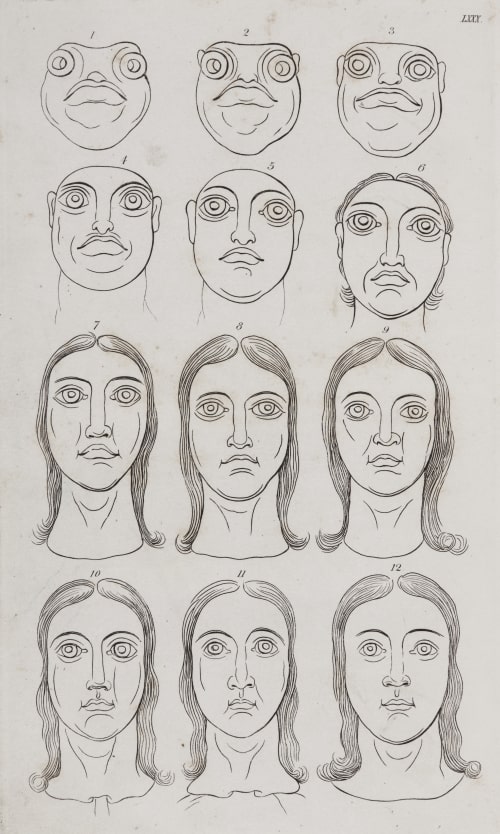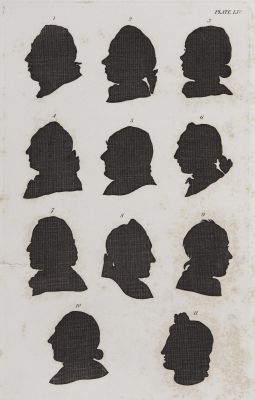
Title
Plate LXXXArtist
Lavater, Johann Caspar (Swiss, 1741-1801)Publication
Essays on PhysiognomyDate
1789Process
EngravingImage Size
19.6 x 11.3 cm
Johann Caspar Lavater (1741-1801), the famous physiognomist, believed that the silhouette, although the least finished form of portraiture, was the most truthful and revealing of character. Lavater used about 150 silhouettes among the illustrations in his monumental work Physiognomische Fragmente (Zurich, 1775 -76). Lavater is credited with developing the silhouette machine. Lavater’s work created an enormous interest in both physiognomy (a field of study by which one could judge character from facial characteristics) and the silhouette, and for a time there was an absolute craze for these portraits which required no knowledge of drawing. Anyone could make silhouettes by the shadow-tracing method, and people collected and exchanged them with friends as they did carte-devisite photographs eighty years later. While the silhouette was at its zenith, a still better process for executing mechanically and rapidly small and cheap portraits was introduced in France—the physionotrace.
References
Marien, Mary W. Photography: A Cultural History. Englewood Cliffs, NJ: SunSoft Press, 2002. p. 5.
https://blogs.harvard.edu/houghton/silhouettes/
https://printedpicture.artgallery.yale.edu/bits-and-pieces at 7:00
Gernsheim, Helmut, and Alison Gernsheim. L.j.m. Daguerre: The History of the Diorama and the Daguerreotype. New York: Dover Publications, 1968. p. 115

